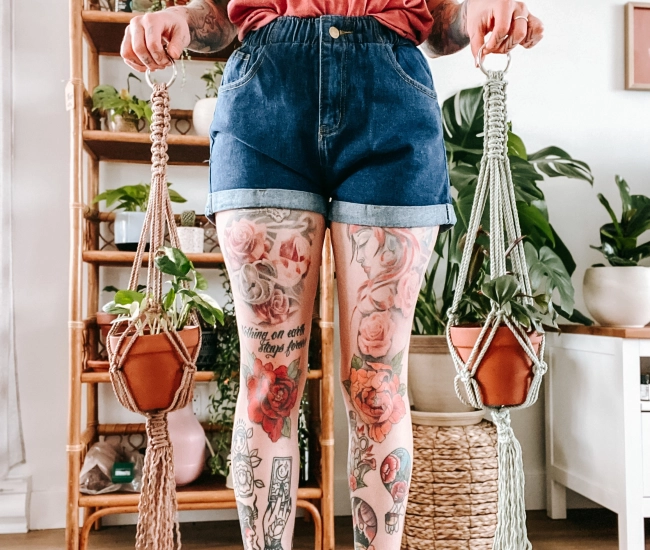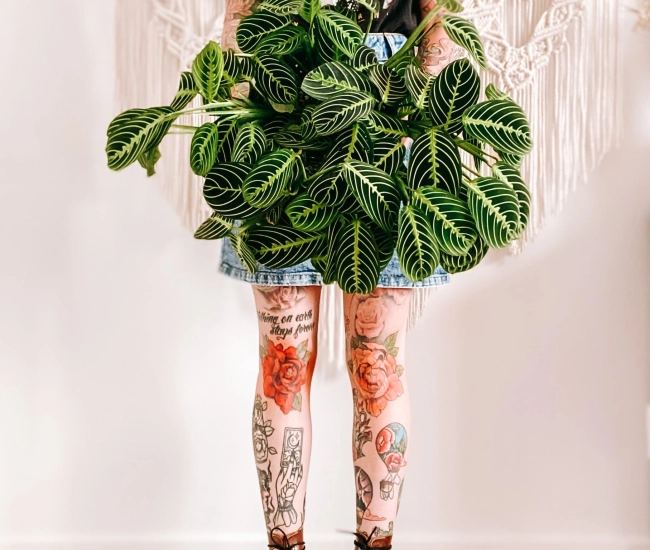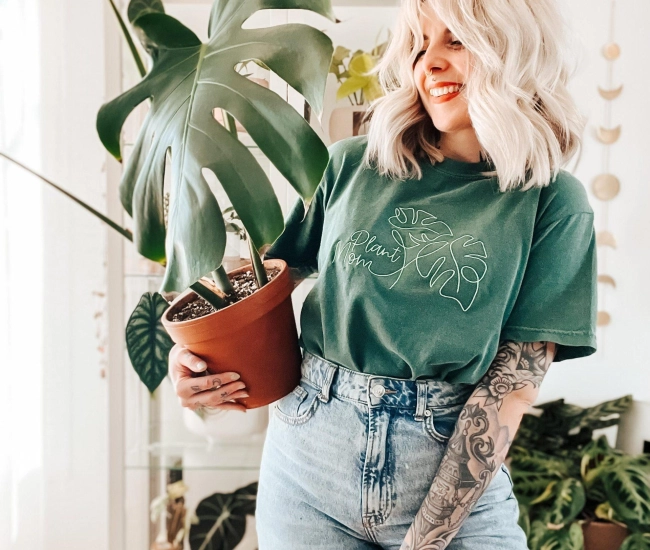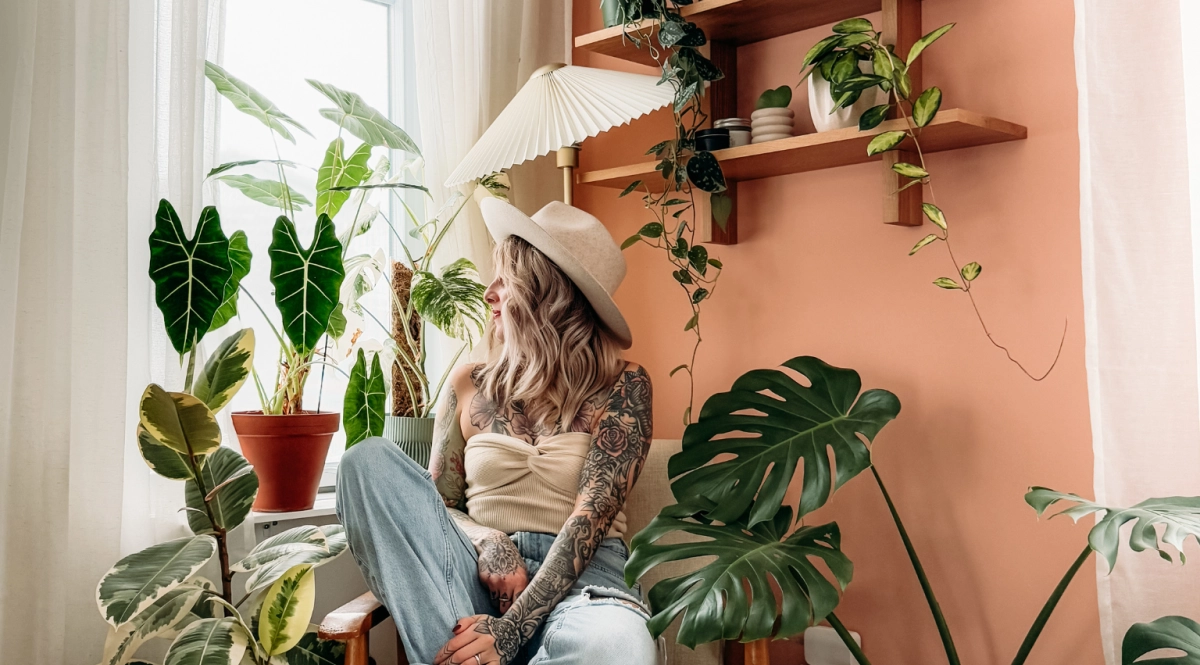
The burning question: How do I prevent my pet from touching my plants? It's a question I get very often on social media since I myself have 3 little companions at home.
Here are some little tricks to help you keep your pets safe with your plants!
Opt for non-toxic plants
The Peperomia
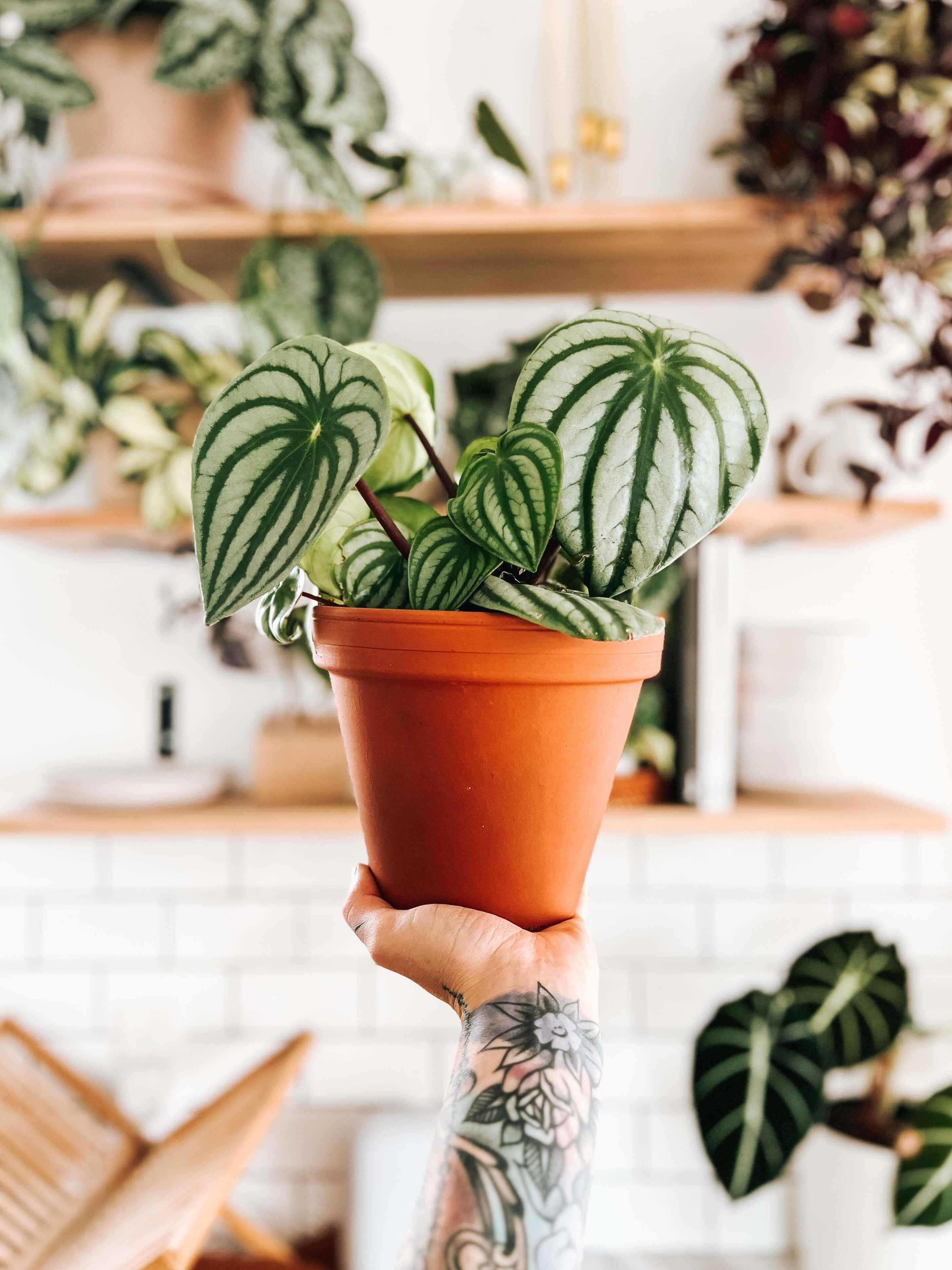
There are many varieties of peperomia, and they are all non-toxic for your little four-legged companion.
I particularly like the Watermelon Peperomia, which has leaves with a watermelon pattern. I also like the Peperomia Obtusifolia, which is a relatively easy-to-care-for plant and can also be found in a "variegata" version with color variation on its leaves.
- Care: relatively easy!
- Watering: Wait until the soil is completely dry between waterings, be careful of excess water, but it doesn't like to be forgotten for too long either.
- Sunlight: Peperomia likes bright light, but placing it in direct sunlight in a south-facing window might be too much for it. Morning or late afternoon sun would be perfect for it. Otherwise, indirect sunlight is also very good. I recommend fertilizing when the plant is growing.
The Orchid
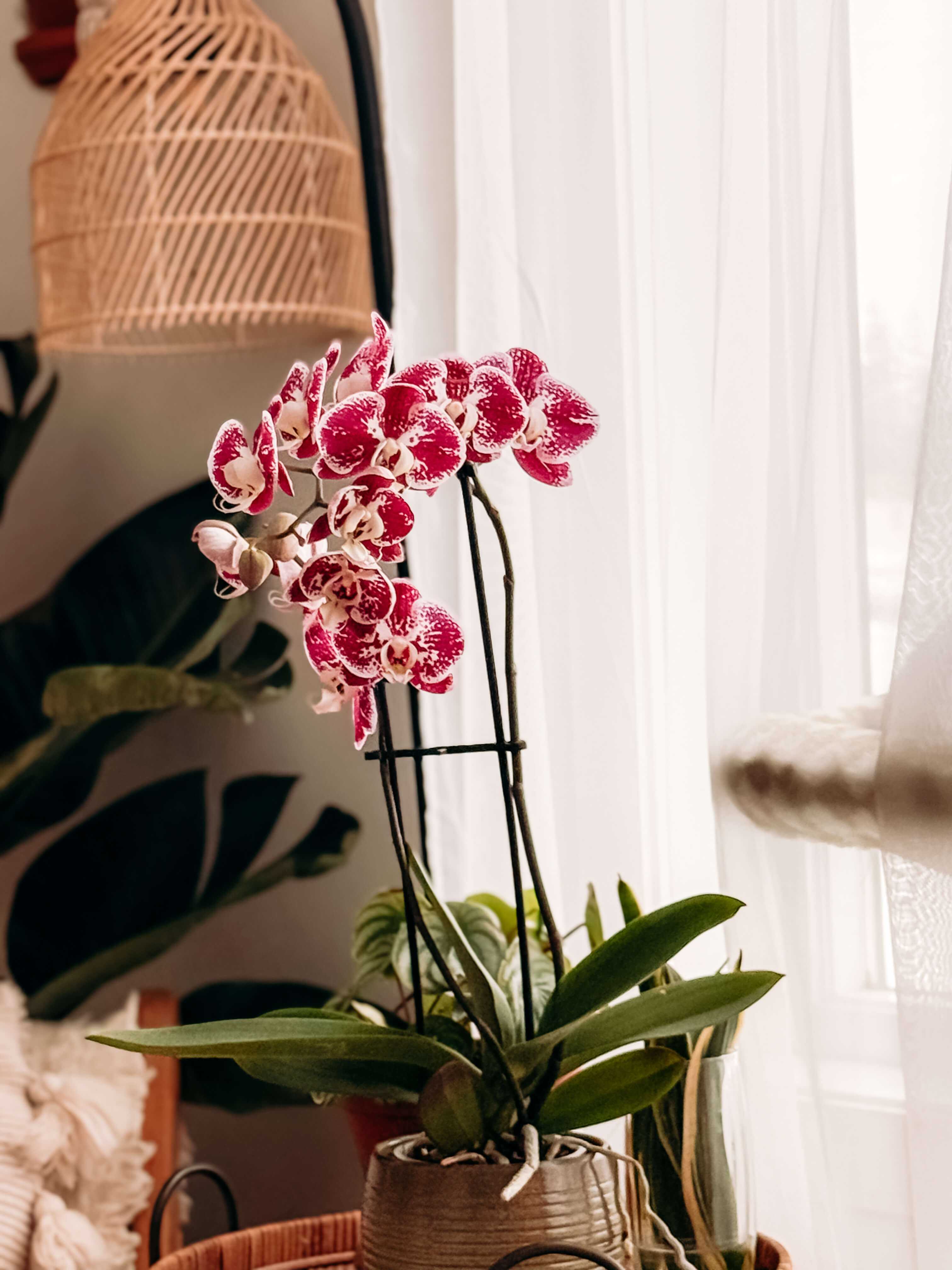
This is another beautiful indoor plant that is non-toxic for animals.
The orchid, particularly the Phalaenopsis (moth orchid), is an elegant plant that requires specific care to thrive. Here are the essential points for its care:
- Light: It likes bright but indirect light. However, it will do well on the windowsill facing west or east.
- Watering: It is generally recommended to water it by soaking. Dip your pot in room temperature water for 10-15 minutes and let it drain. Avoid stagnant water in the cachepot.
- During flowering, don't hesitate to fertilize it. After flowering, if the stem is still green, cut above a node to encourage new flowering. If the stem is dry, cut it at the base. I recommend repotting your orchid (with soil adapted for it) every 2 or 3 years to provide optimal space for the roots.
The Maranta and the Calathea
They are called prayer plants because their leaves move during the day to capture sunlight. According to me, these are slightly more difficult to care for, requiring more humidity and regular watering (preferably without lime).
They are plants with beautiful foliage in my opinion. There are several varieties that are non-toxic for our furry friends:
- Maranta leuconeura 'Fascinator Tricolor' – Dark green leaves with red veins and light green spots.
- Maranta leuconeura 'Kerchoveana' – Also called "Rabbit’s Foot," it has pale green leaves with chocolate brown spots that turn dark green with age.
- Maranta leuconeura 'Silver Band' – Dark green foliage with a central silver band that gives it a unique shine.
- Maranta leuconeura 'Lemon Lime' – A stunning variety with light green and yellow veins on a deep green background, a brighter version of the Fascinator.
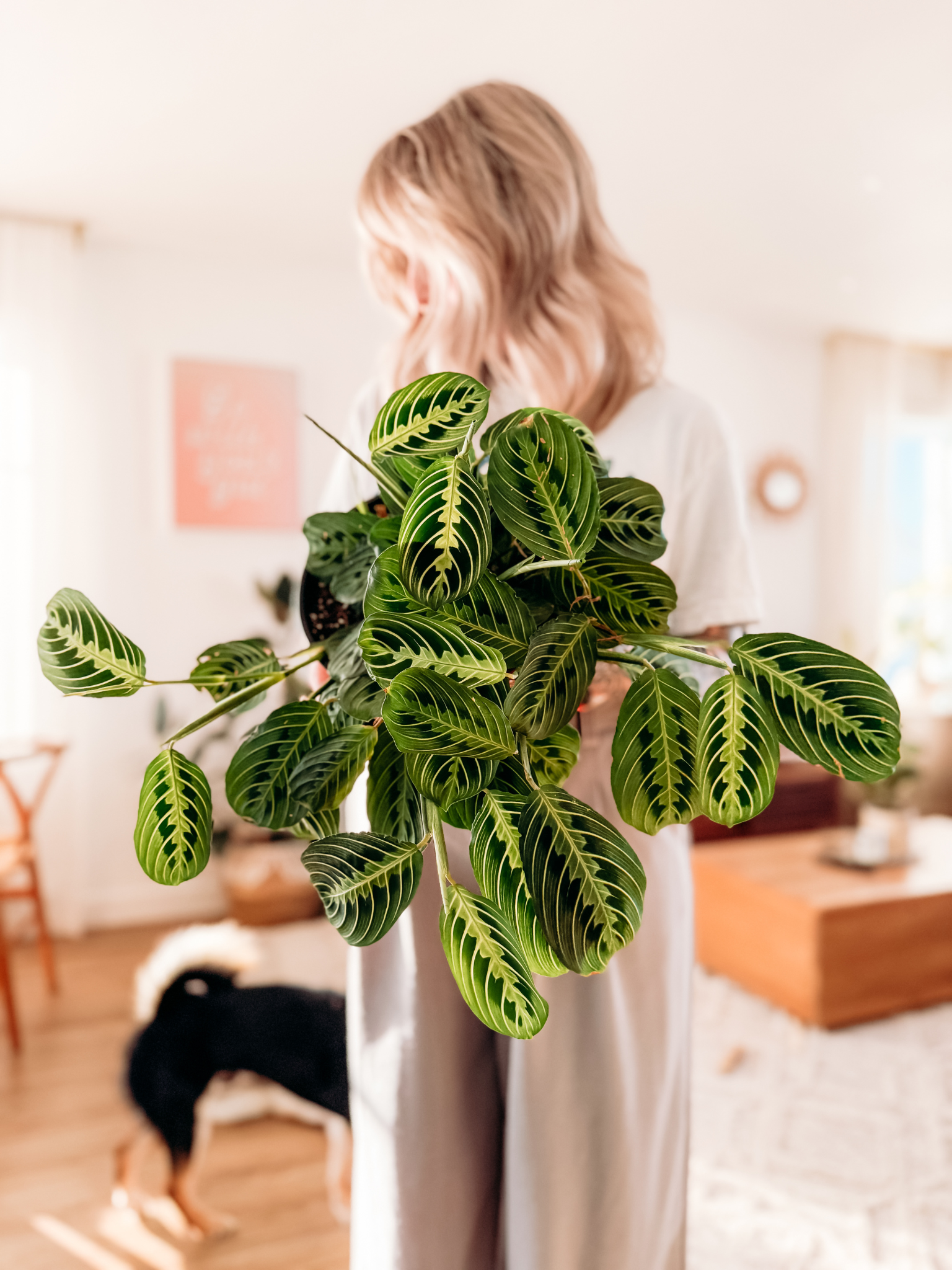
- Calathea orbifolia – Large round pale green leaves with silver bands.
- Calathea medallion – Round foliage with a dark green and cream pattern on top and an intense purple underside.
- Calathea white fusion – Marbled green, white, and sometimes slightly purple foliage, one of the rarest and most spectacular.
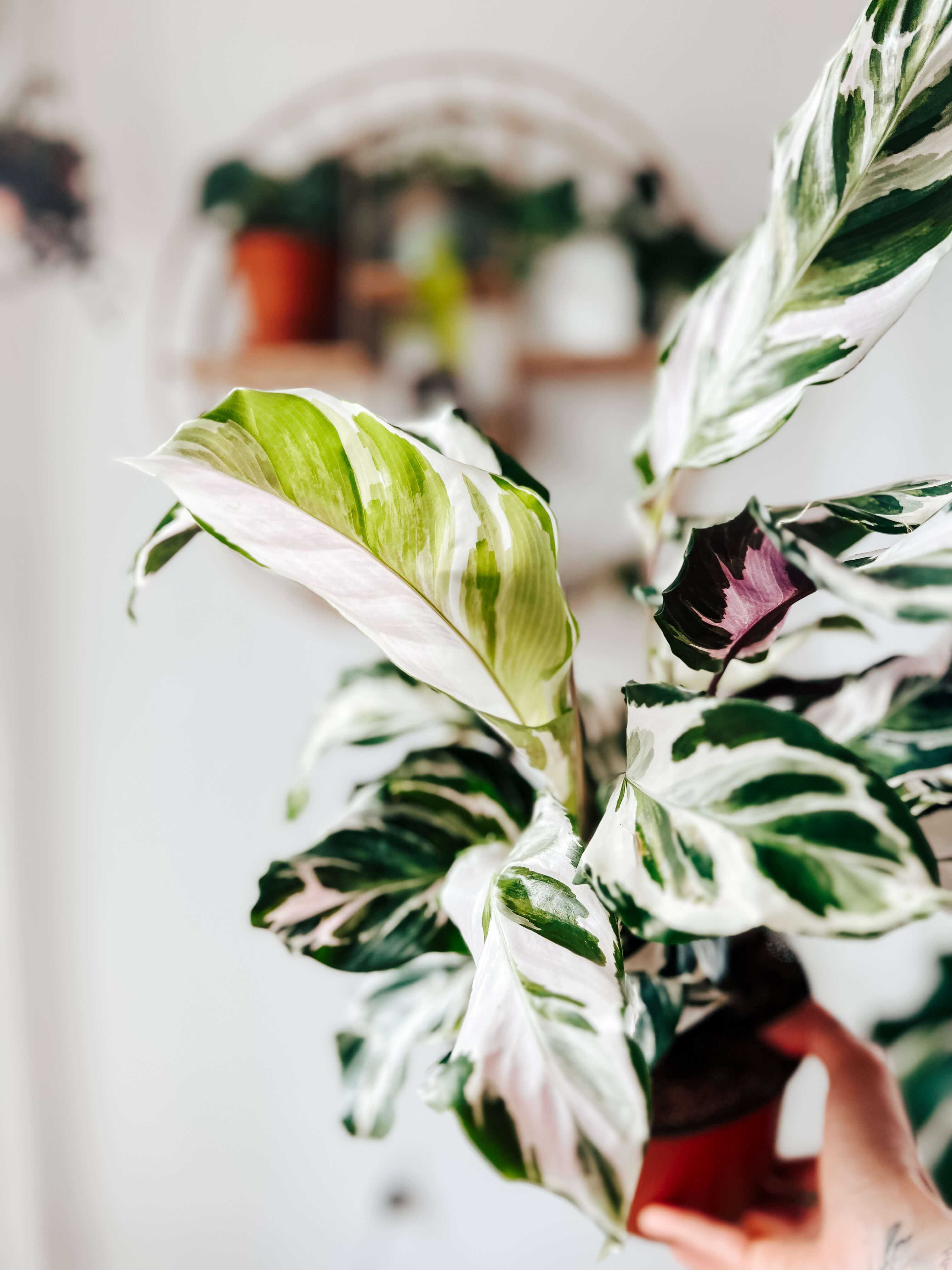
Place your plants up high
Use wall shelves or hangers to keep them out of reach.
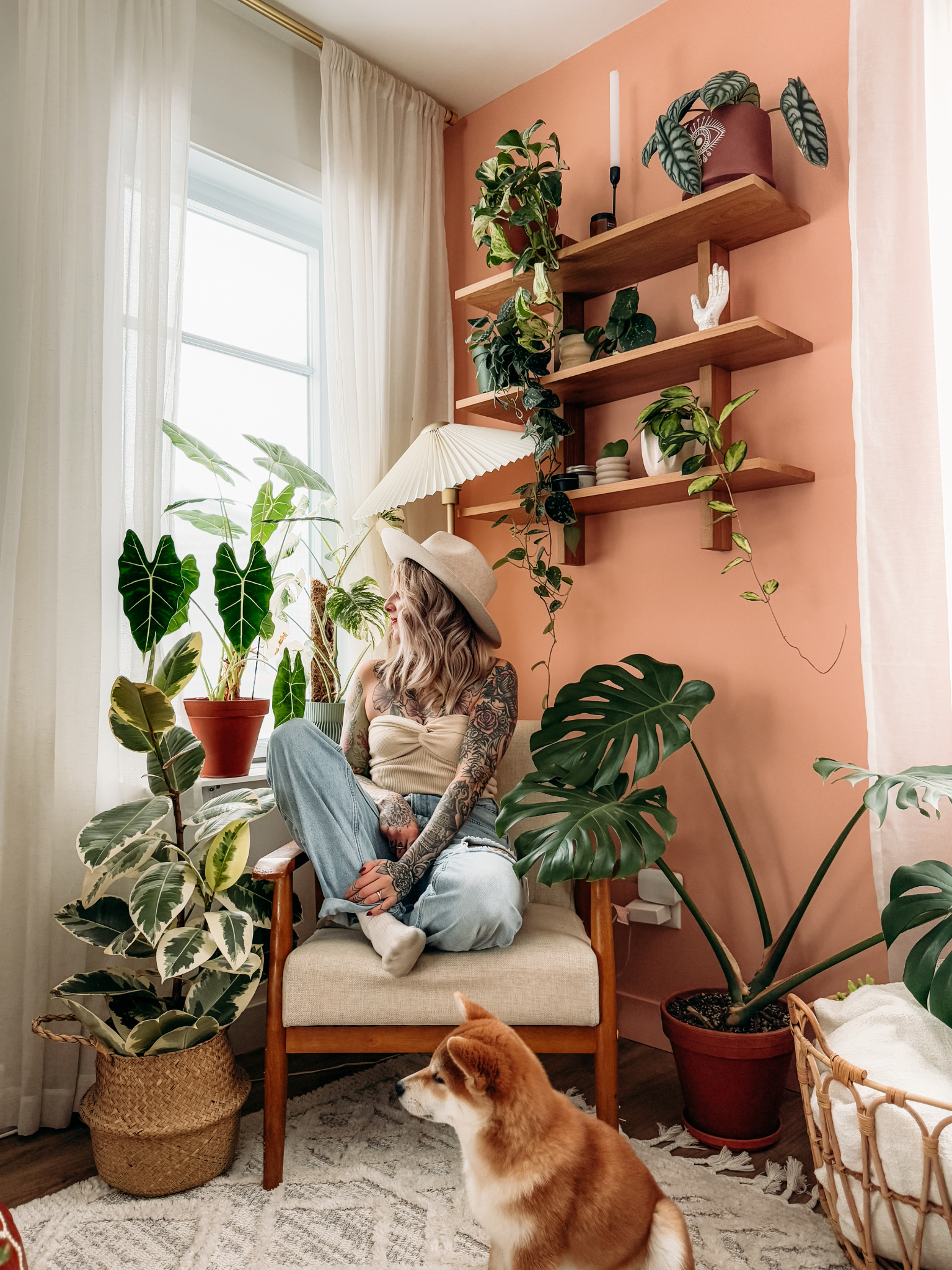
Use a natural repellent
- Citrus: Cats hate the smell of lemon or orange (you can rub a peel on the pot).
- Pepper or cinnamon: Sprinkle a little cinnamon or pepper around the pot.
- Diluted vinegar: Lightly sprayed on the pot (not on the plant)
- There are also grilles designed specifically to place around your pot so the animal can't dig.
Distract with alternatives
- Offer catnip to divert their attention.
- Add interactive toys to prevent them from getting bored and attacking the plants.
Gently educate our animals
If your pet approaches a plant, say a firm "no" and redirect them to a toy. Praise them when they ignore the plants to reinforce good behavior. For cats, it's also possible to redirect them to catnip or use a water spray to make them understand it's not good.
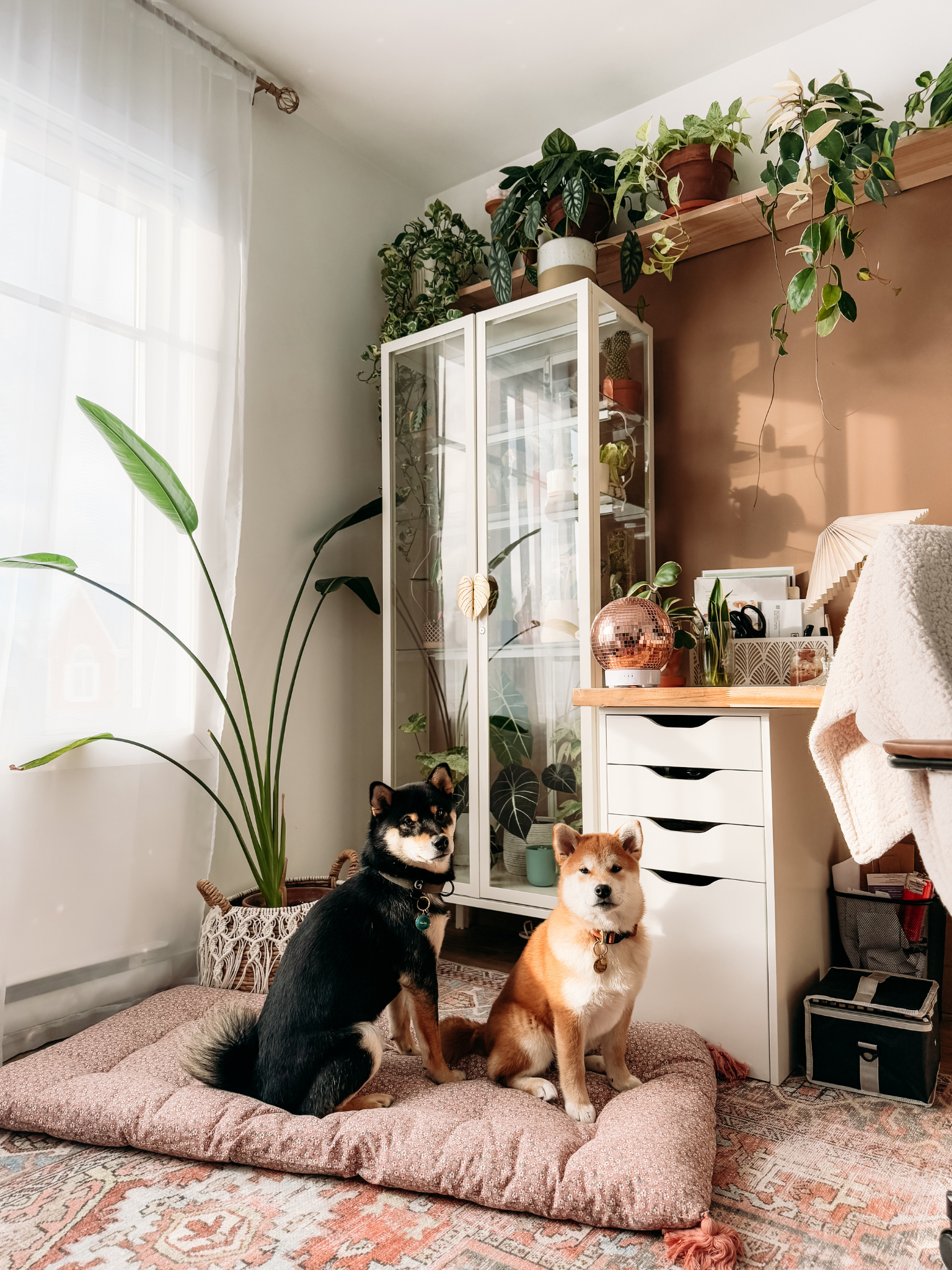
There you go! I hope my little tips will help you, and we'll leave you with a more complete list of 20 non-toxic plants for animals:
- Calathea (Calathea spp.) – Indoor plant with decorative leaves.
- Maranta (Prayer Plant) (Maranta leuconeura) – Colorful foliage that folds up at night.
- Areca (Butterfly Palm) (Dypsis lutescens) – Elegant and safe palm.
- Kentia Palm (Howea forsteriana) – Ideal for adding a tropical touch.
- Mountain Palm (Chamaedorea elegans) – Easy to care for and resilient.
- Boston Fern (Nephrolepis exaltata) – Excellent for indoor humidity. Zebra Plant (Aphelandra squarrosa) – Pretty blooms and distinctive foliage.
- Pilea peperomioides – Known as the "Chinese Money Plant."
- Fittonia (Mosaic Plant) – Small colorful plant that loves humidity.
- African Violet (Saintpaulia) – Beautiful blooms and safe for animals.
- Chlorophytum (Spider Plant) (Chlorophytum comosum) – Easy to care for and purifies the air.
- Peperomia (Peperomia spp.) – Varied and compact foliage, perfect for small spaces.
- Catnip (Nepeta cataria) – Not only safe but also appreciated by felines!
- Dwarf Banana (Musa spp.) – Tropical plant that adds an exotic touch.
- Orchid (Orchidaceae) – Elegant and completely harmless to animals.
- Hoya (Wax Flower) (Hoya spp.) – Beautiful fragrant flowers and shiny foliage.
- Begonia maculata (Begonia maculata) – Spectacular spotted leaves and safe.
- Hypoestes (Splash Plant) (Hypoestes phyllostachya) – Colorful and decorative foliage.
- Gloxinia (Sinningia speciosa) – Pretty blooms and perfect indoors.
- Fatsia japonica (Japanese Aralia) – Beautiful plant with large lush leaves.
Tips and advice

